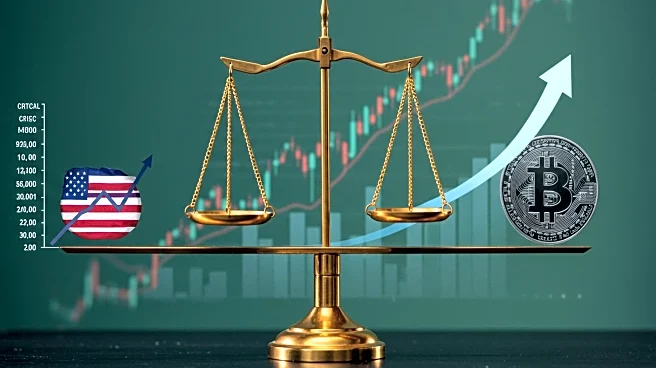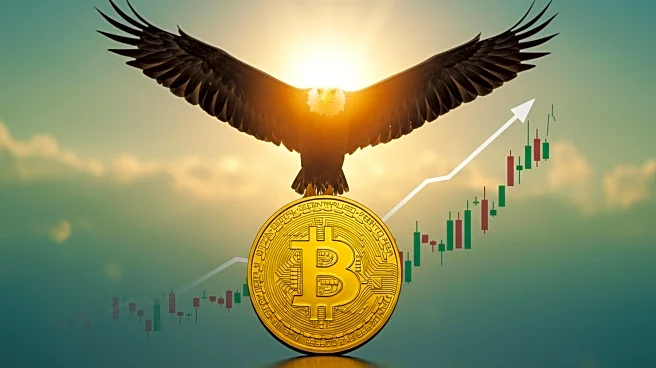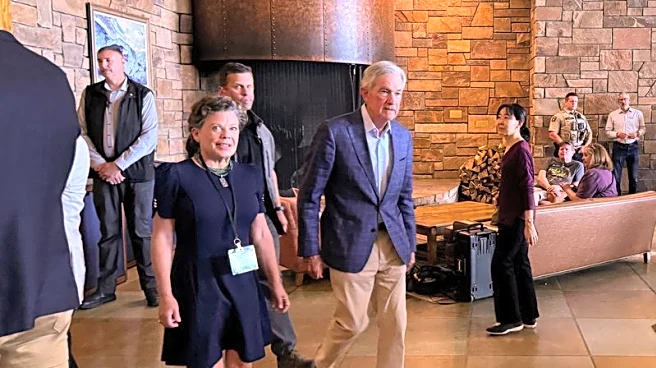What's Happening?
Federal Reserve Chair Jerome Powell indicated at the Jackson Hole Economic Policy Symposium on August 22, 2025, that a rate cut might be necessary in the near future due to increasing economic uncertainties, particularly in the labor market. Although Powell did not confirm a rate cut at the upcoming Federal Open Market Committee (FOMC) meeting in September, his comments led to a significant market reaction. The Dow Jones Industrial Average surged nearly 900 points shortly after his speech, with the S&P 500 and Nasdaq Composite also seeing notable gains. Powell described a 'curious kind of balance' in the labor market, where both supply and demand for workers have slowed, creating potential risks for employment. Despite a low unemployment rate of 4.2%, Powell warned of the labor market's fragility, exacerbated by immigration policies from the Trump administration that have reduced labor force growth.
Why It's Important?
Powell's remarks have significant implications for U.S. economic policy and financial markets. The possibility of a rate cut has increased market expectations, with the CME FedWatch tool showing an 87% probability of a rate cut in September, up from 75% before Powell's speech. This anticipation has affected bond markets, with Treasury yields falling as investors seek to lock in higher rates. The U.S. dollar has weakened against major currencies, reflecting expectations of slower economic growth and a more accommodative monetary policy. Additionally, Powell's comments on U.S. tariffs highlight potential inflationary risks, aligning with recent data showing a significant increase in the Producer Price Index. The prospect of rate cuts has also influenced the cryptocurrency markets, with Ethereum and Bitcoin experiencing surges.
What's Next?
The Federal Reserve's next steps remain data-dependent, with internal disagreements among policymakers about the timing and magnitude of potential rate cuts. The September FOMC meeting will be crucial in determining whether the Fed aligns with market expectations. This decision will have further implications for financial markets, inflation dynamics, and economic growth. Some Fed officials, like Boston Fed President Susan Collins and Cleveland Fed President Loretta Mester, have expressed caution, emphasizing the need for more definitive inflation data before easing monetary policy.
Beyond the Headlines
Powell's speech underscores the complex interplay between monetary policy, labor market dynamics, and trade policies. The potential rate cuts reflect broader economic challenges, including structural issues like an aging population and reduced labor force growth due to immigration policies. These factors contribute to the fragility of the labor market and the broader economy, highlighting the need for careful policy calibration to balance growth and inflation risks.












